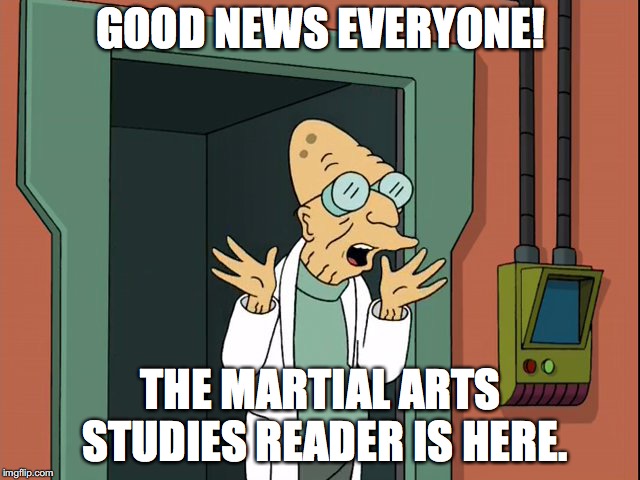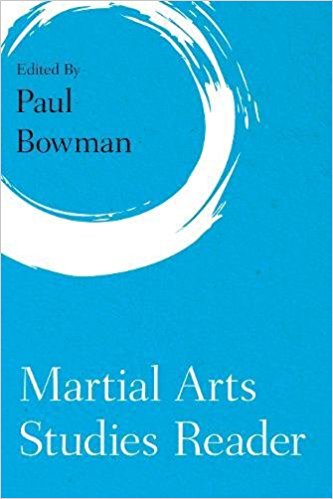Performance Ethnography and the Martial Arts Studies Reader
As the indomitable Professor Farnsworth would say, good news everyone! The long anticipated Martial Arts Studies Reader (Rowman & Littlefield, 2018) is now shipping. Weighing in at 244 pages, and featuring articles by over a dozen of the most respected names in the field, this volume is sure to be referenced for years to come. Its timely chapters can easily be integrated into a wide variety of course reading lists. And if you look closely, you may even find my latest paper on the lightsaber combat community. This book will be of interest to both scholars and practitioners seeking to understand the evolution and social meaning of the modern martial arts. Featuring articles by Peter Lorge, Douglas Wile, Meaghan Morris and D. S. Farrer, it is sure to find a place on all of our holiday gift lists.
Speaking of which, D. S. Farrer has been kind enough to post the text of his chapter on performance ethnography. His paper opens a window onto the sorts of content that one will find in the Martial Arts Studies Reader. It also provides students with a great discussion of one of the most important research methodologies being employed in the field today. Take a look at the volume’s table of contents, read Farrer’s chapter, and order your copy today!
Table of Contents
Introduction: “What, Where and Why is Martial Arts Studies?” Paul Bowman
2. “Early Chinese Works on Martial Arts” Peter Lorge
3. “The Battlefield and the Bedroom: Chinese Martial Arts and Art of the Bedchamber” Douglas Wile
4. “Martial Arts by the Book: Historical European Martial Arts” Daniel Jaquet
5. “The Phone Book Project: Tracing the Diffusion of Asian Martial Arts in America Through the Yellow Pages” Michael Molasky
6. “Martial Arts, Media, and (Material) Religion” Esther Berg-Chan
7. “Liminoid Longings and Liminal Belonging: Hyper-reality, History and the Search for Meaning in the Modern Martial Arts” Benjamin N. Judkins
8. “‘He’s an Animal’: Naturalizing the Hyperreal in Modern Combat Sport” Janet O’Shea
9. “Martial Arts as a Coping Strategy for Violence” Sixt Wetzler
10. “Performance Ethnography” D. S. Farrer
11. “Martial Arts Studies and the Sociology of Gender: Theory, Research and Pedagogical Application” Alex Channon
12. “Masculinities, Bodies, and Martial Arts” Dale C. Spencer
13. “Martial Arts as Embodied, Discursive, and Aesthetic Practice” Tim Trausch
14. “Carnival of the Drunken Master: The Politics of the Kung Fu Comedic Body” Luke White
15. “Learning from Martial Arts” Meaghan Morris and Paul Bowman
Chapter 10: Performance Ethnography
DS Farrer
The human mind is apt to perceive many things, and more so according as its body can be disposed in more ways. —Spinoza, Ethics IIP14 (1977: 52)
Performance ethnography, where the researcher sets out to learn a martial art, or other skill, is a somatic extension of participant observation where the body may become both subject and object of research. This chapter traverses essential features of ‘how to do’ performance ethnography in martial arts research, thereby introducing a methodological toolkit to a new generation of ‘fighting scholars’ (García and Spencer 2013). Perfor-mance ethnography itself, however, is an open quarry for further research. Hence, in addition to a discussion of practical, methodological concerns, this chapter aims towards a fresh theoretical understanding of performance ethnography in terms of ‘immanence’ and ‘emergence’, where the method facilitates creative outcomes, knowledge or theory to surface from within a community of martial artists, dancers or other skilled practitioners (Deleuze 1988, 76).

